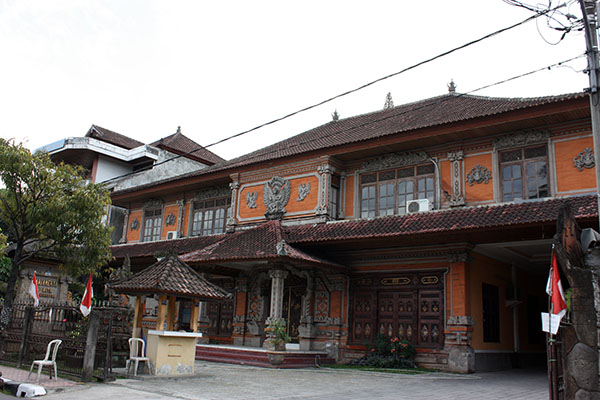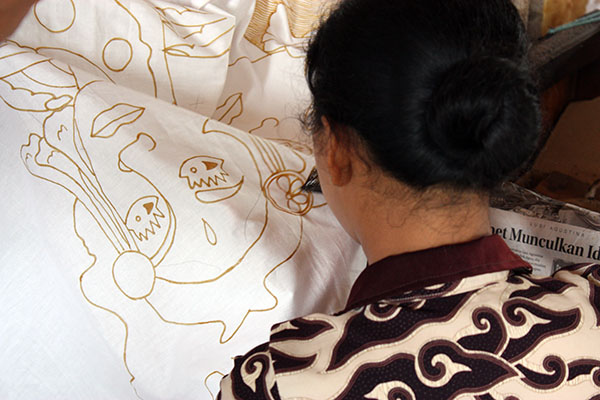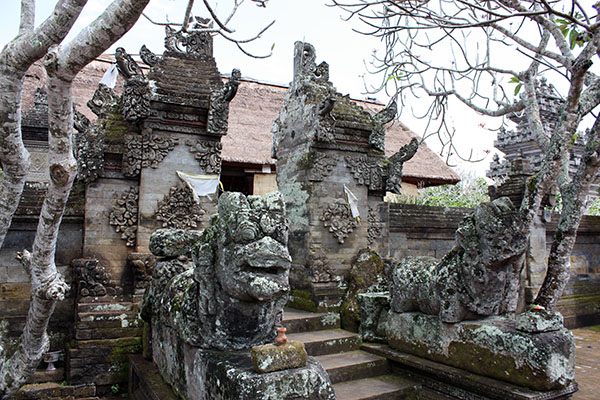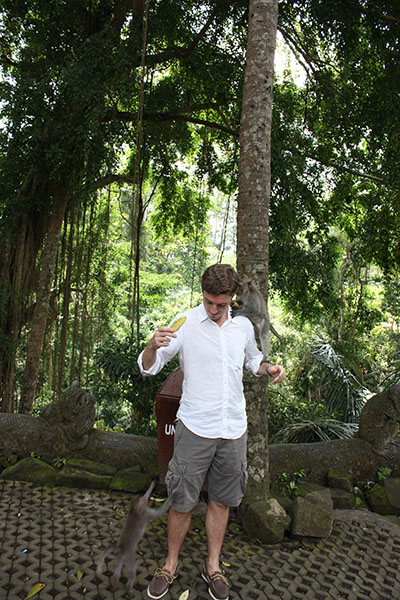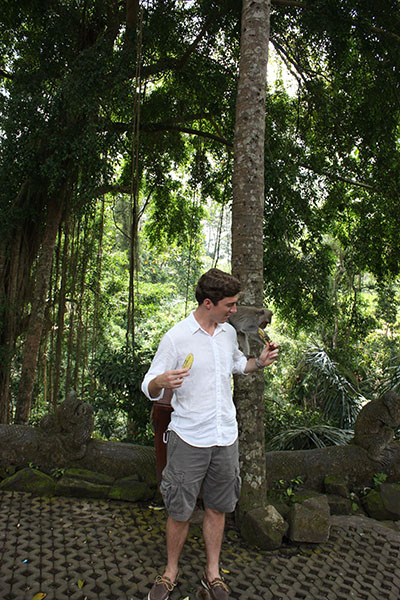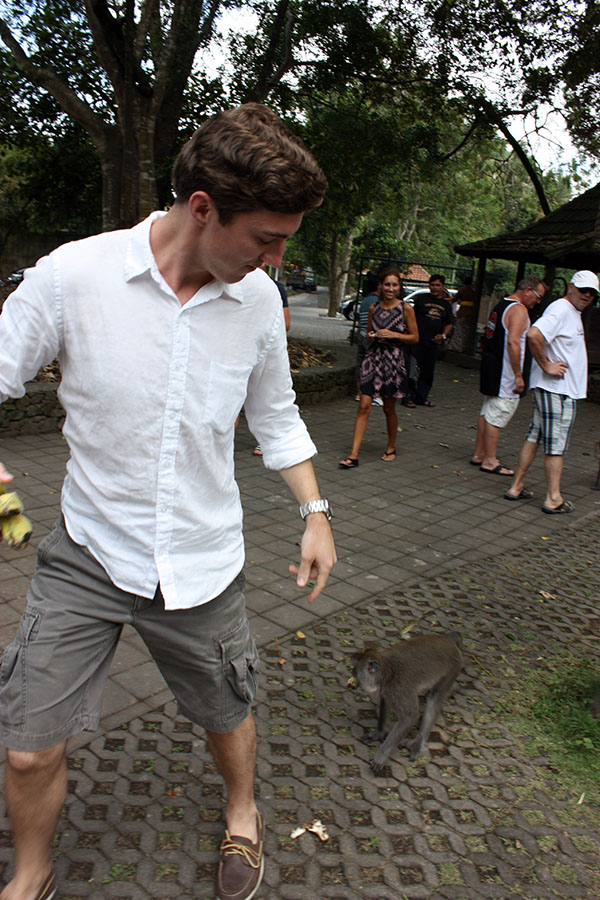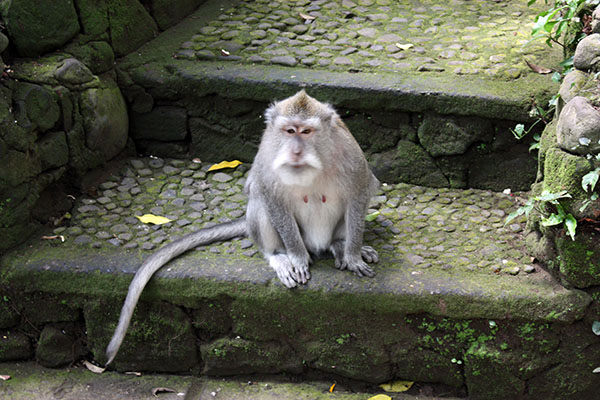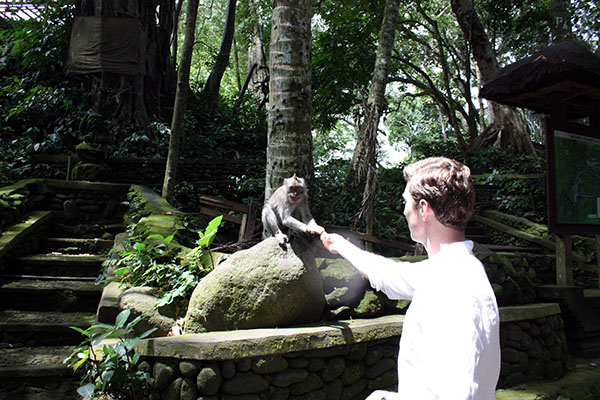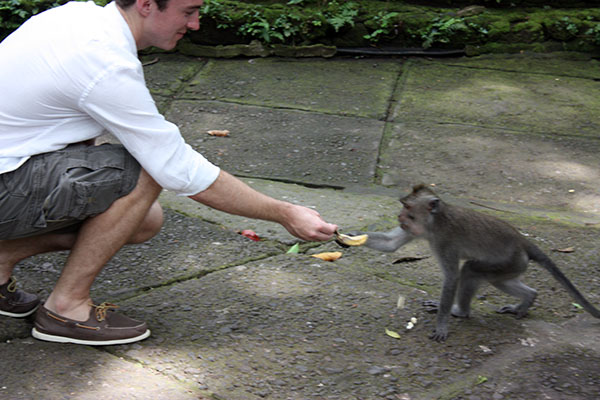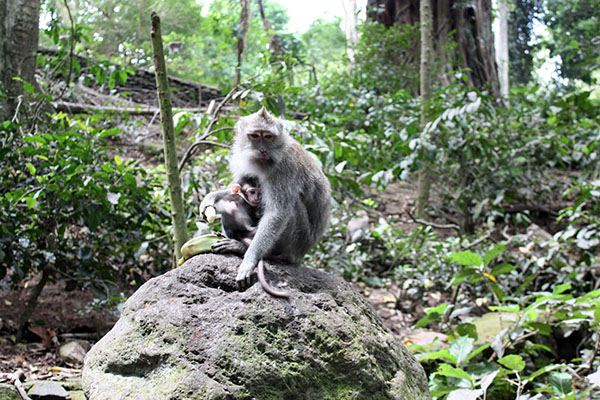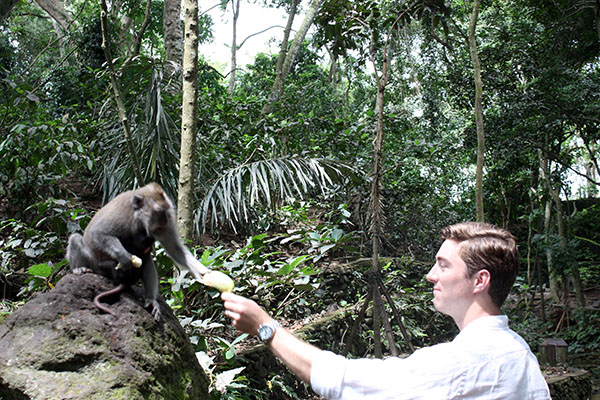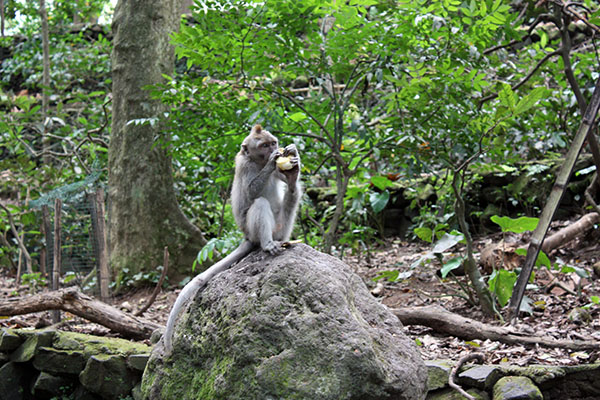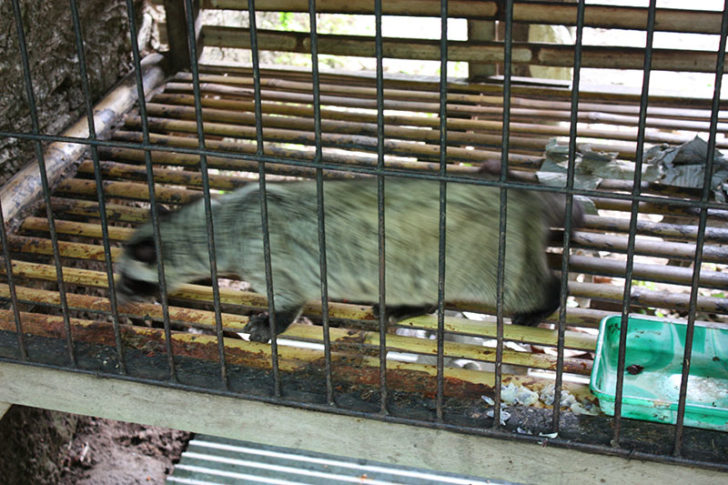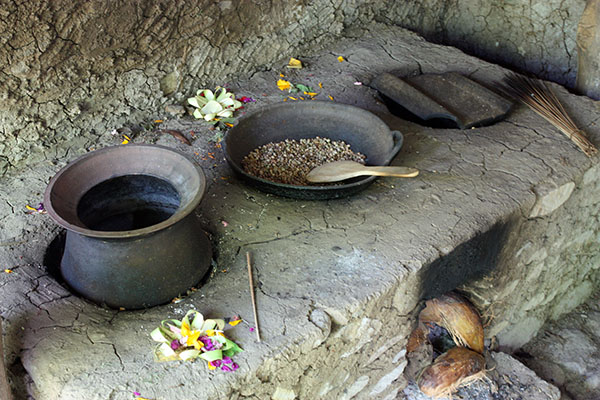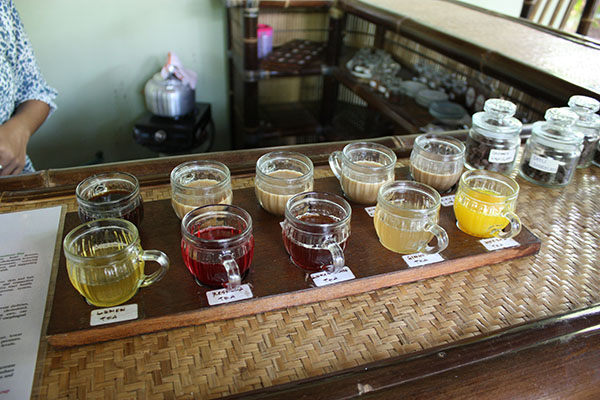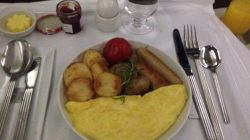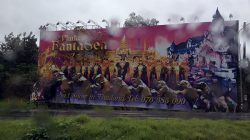Megan and I took a two-week tour of Southeast Asia during our honeymoon in August/September of this year. Here’s the Trip Report Index:
- Booking the Honeymoon
- Asiana Airlines Business Class (SEA-ICN, HKG-ICN, and ICN-SEA)
- Seoul-Incheon Airport and Singapore Airlines Business Class (ICN-SIN)
- Singapore Zoo
- Singapore Airlines Business Class (SIN-DPS)
- St. Regis Bali – Part 1
- St. Regis Bali – Part 2
- Day Trip to Ubud
- Thai Airways Business Class (DPS-BKK and BKK-HKT)
- St. Regis Bangkok
- Westin Siray Bay Phuket
- Day Trip to Phi Phi Islands
- Thai Airways Business Class (HKT-HKG)
- Conrad Hong Kong
Megan and spent most of our time in Bali at the St. Regis, but we did take one trip to Ubud, a mountain village that is on the must-see list for nearly all tourists that visit Bali. I agree that it is a must-see, but personally I could probably afford skipping it on future trips now that I have been there once.
We hired a driver through the St. Regis concierge at a rate of approximately $100 for the day, plus tip. We were met at 9 AM by a friendly driver and a well-maintained, spacious SUV. It was definitely a step up from the smaller Bluebird taxis. Many taxi drivers will offer to drive you to Ubud for the day, but the larger vehicle is worth it because it is definitely an all-day affair.
Our driver took us through the city traffic around Denpasar and made friendly conversation most of the way. I thought he struck a good balance between avoiding awkward silences and not being too chatty. In the process he learned a bit about America and we learned more about Bali.
I was skeptical at first about how this trip would pan out. He immediately proposed several stops along the way to Ubud, at little “villages” that made certain handicrafts that we might be interested in learning more about and possibly purchasing. I’ve run into such scams in Bangkok before and really didn’t want to be pressured into a hard sell. I wanted to visit Ubud and was paying for the privilege. Anything else was extraneous.
Fortunately our driver proved my suspicions wrong, and we actually enjoyed most of these detours. Our first stop was at a jewelry workshop. The elaborate designs on the side of the building enchanted Megan, and inside we could see several dozen employees each working on a single step in the manufacturing process: bending metal wire, polishing stones, or inserting gems into their clasps. It wasn’t particularly high tech, but it was far more professional than I expected. We bought a small pair of earrings for Megan and no one pressured us to buy anything more. It was much the same at the other places we stopped. Buy something if you like it, but there was no pressure.
Our second stop was a batik factory. Here, fabrics are dyed in multicolored patterns using wax to block out parts of the pattern, much like dying an Easter egg. Designers outside the storefront were applying the hot, brown wax to the white cloth in elaborate patterns. We didn’t get to see them dying the cloths and melting the wax out, but inside there were many scarves, shirts, and even artwork that we could purchase. None of this was particularly appealing so we took a look around and left quickly.
Our third and fourth stops were at an old Hindu temple and an art gallery. The outdoor temple was an interesting experience but perhaps not as edifying as it might have been if our driver had come with us. It was at this point we realized our driver was really just that: he drove us from point to point and made suggestions, but we were on our own when we arrived. I was fine with that as I have never been a huge fan of guided tours. The art gallery was the only place where we became more concerned about the role driver played in guiding our purchasing decisions. It was more expensive than the other places we visited, and since it was raining during the 30 minutes we spent there we couldn’t really go anywhere else. But it was all very pretty and one of the better stops along the road.
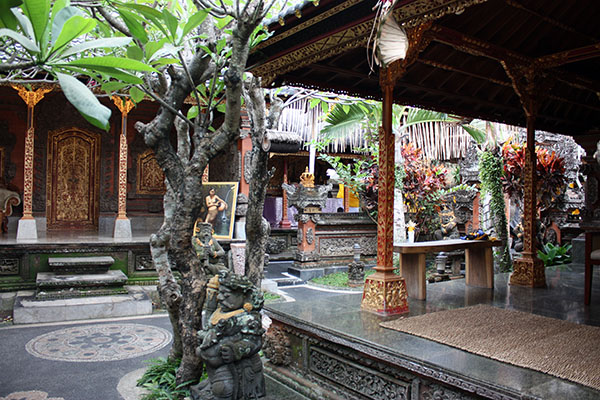
Other than the jeweler who made sterling silver bangles for women, the only other shop we purchased from was the woodshop at our final stop before Ubud. This was also the only place with a hard sell. We were given a short tour of the carving and staining process (relatively unimpressive, using shoe polish rather than actual wood stain). Many of the carvings were some kind of phallus, some of them key chains and others four-foot tall sculptures — as if anyone would want that in their living room.
We did see a few jewelry boxes, and I suggested Megan buy one since she had always complained about not having enough places to keep her jewelry which causes some of her accessories to get damaged and require jewelry repair services. And this is where things got interesting.
The “official” list price was 900,000 rupiah, but the dealer who followed us around claimed to be able to do better. I hate bargaining, so it’s good he offered because I was ready to walk away at 900K (about $75). He went back and forth between us and his “boss” doing all the haggling for us, eventually getting down to 400K rupiah. He made it sound like he was cheating his boss and dropped a fairly obvious hint he expected a bribe for his assistance. He got an extra 50K for his trouble.
Is 450K still too much? Maybe. But what is a fair price when you’re buying your wife a present on your honeymoon? I’m just impressed that this guy did all the haggling on his own. For the record, I don’t haggle. The merchant will either offer a fair price or he won’t, and I’ll pay or I’ll walk away. In this case both parties ended up happy.
Finally we made it to Ubud. I was not impressed with the village itself. There were lots of touristy shops there selling the usual crap, and more temples like the one we already stopped at but overrun with other tourists taking photos. I was glad we had stopped at the shops along the way and gotten this over with. The only things we did in Ubud were eat lunch and visit Monkey Forest. Lunch was great and cost about 200K.
Monkey Forest, however ,was the highlight. I loved Monkey Forest. Absolutely and without reservation. Megan was about ready to leave as soon as we arrived. I left when I was good and ready, smelling like monkey for the rest of the day.
See, I’ve worked with all kinds of animals as a biologist. My favorite course in high school was anatomy, when we got to dissect a member of every phylum. The fetal pig was a highlight. And in college and graduate school I’ve worked with worms, mice, rats, fish, and rhesus macaques. The macaques terrified me for most of my internship at the National Institutes of Health, yet I enjoyed the experience because there are so few opportunities to interact with primates in the United States. Megan’s fear is an example of this. By and large our culture is afraid of what we can’t control.
Monkeys are everywhere in Asia, not just in Monkey Forest, and I was determined to interact with them in an environment free of cages and collars. So when our driver dropped us off and warned against buying any bananas, the first thing I did was reach for my wallet. As you can see from the photos, they very much enjoyed my generosity.
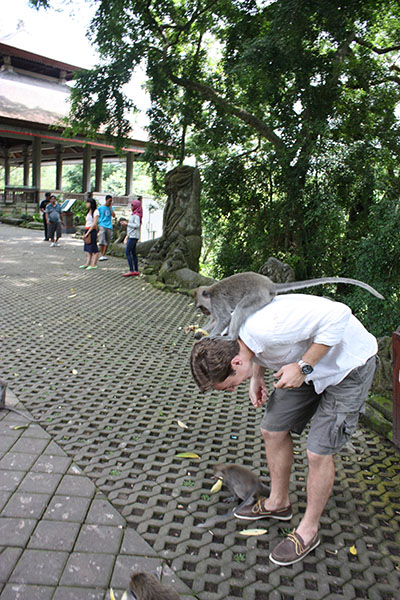
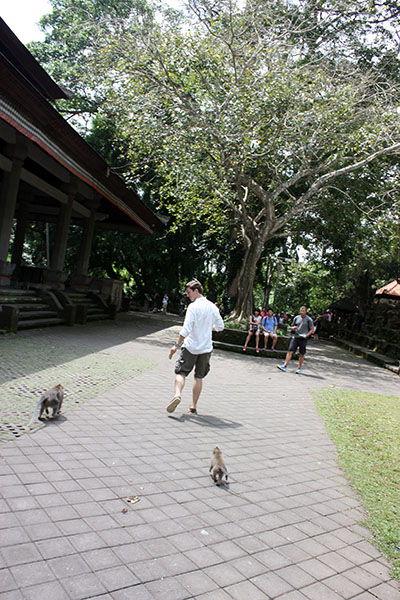
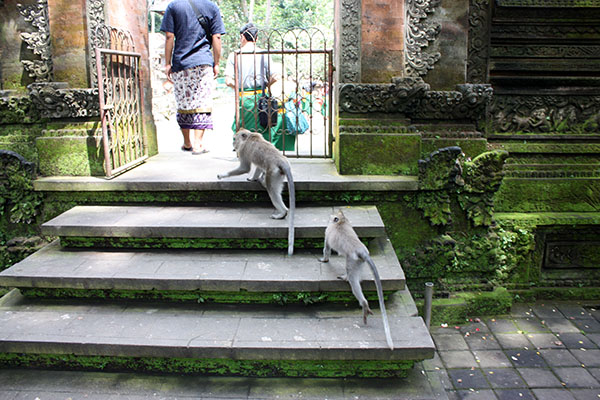
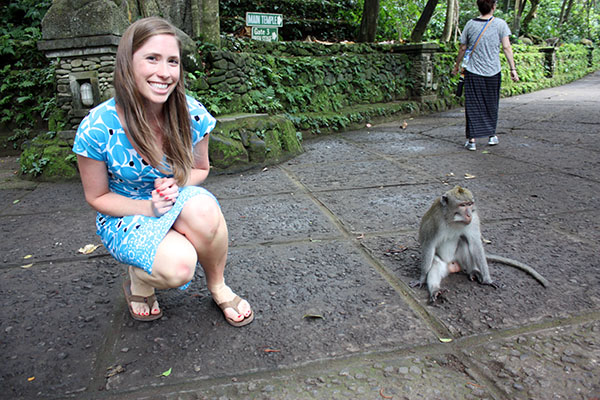
I will warn you that primates are very strong for their size, and they aren’t restrained by human ideas of “right” and “wrong.” If they want that banana, they will get it. Think of a toddler with the strength of a teenager who has nothing left to loose. My best recommendation is to give the camera to someone else and keep the bananas out of sight in your pockets. Their sense of smell is not as good, but they will follow you if they can see you are holding food. A few who had clearly had their fill already were content to sit and watch.
On our way back we made only one request, a stop at a kopi luwak farm to try the infamous coffee made when civets eat coffee cherries and poop them out. Their digestive system is said to impart a unique flavor to the beans, and the difficult of harvesting them in bulk makes it the most expensive coffee in the world.
Our driver knew of one place that had opened recently with small plots of several kinds of plants, including coffee, chocolate, tea, and more. We got to see the civet they kept on the premises. And we paid about 10K rupiah for a tasting of different teas and coffees (5K is the usual tasting fee, plus 5K extra for the kopi luawack). I can’t say the kopi luwack impressed me, as a Seattle coffee snob, but it could be due to the way they prepared the coffee and left the grounds in the cup. It certainly wasn’t bad. The teas were much better — and also sweeter.
We got back to the hotel around 6 PM, just in time to head to one of the St. Regis’ restaurants for dinner. Overall it was a great experience and one I am very glad we took. I’m not sure you need to explore the rest of the island on every day of your trip, as I might suggest if you were visiting Hawaii, but you should certainly make at least some effort. The people of Bali were always friendly and welcoming, and the prices in Indonesia for a trip like this may seem high but are generally affordable once you convert them back to U.S. dollars.




